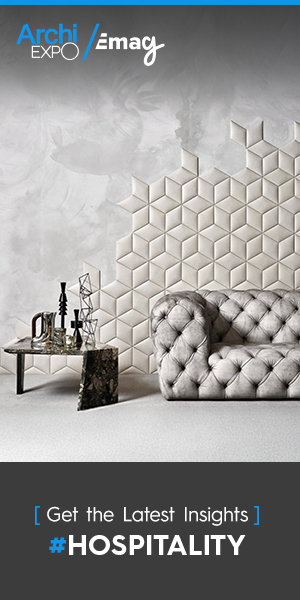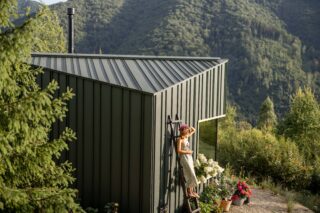Bali-based American artist Sunny Jackson creates sculptural lighting pieces that merge crystal, wood, and light into energy-infused forms. She uses blockchain to provide sourcing transparency, expressing the evolution of luxury and the art industry.
In a bit of a hurry? Here are the main takeaways:
- Sunny Jackson works with ethically sourced quartz crystals from artisanal miners in the Himalayan region of northern Pakistan.
- Every crystal’s journey from mine to collector is tracked and verified through Provenance Proof blockchain technology developed by Gübelin Gem Lab in Switzerland.
- Each artwork includes an NFT documenting the crystal’s mine origin, extraction date, and full journey to her Bali studio and ultimately to its collector.
- She’s among the first artists to integrate blockchain transparency into contemporary sculpture, offering collectors a level of provenance and integrity rarely seen in the art world.
Blockchain technology is increasingly seen as a game changer in the art world, promising transparency, ownership verification, and new financial opportunities. As the decentralized, immutable nature of blockchain eliminates the traditional opacity of the art market, artists and collectors alike find assurance in open platforms filled with due diligence records. Beyond digital art, blockchain’s potential to trace the origins of physical materials is redefining the perception of luxury and authenticity.
One artist exemplifying this evolution is Bali-based American sculptor Sunny Jackson. Known for her energy-infused lighting sculptures that merge crystal, wood, and light, Jackson is at the forefront of integrating blockchain into physical art. Recently, she made headlines by partnering with Provenance Proof, a blockchain platform developed by the Gübelin Gem Lab in Switzerland.
Through this partnership, Jackson ensures that every crystal’s journey from mine to masterpiece is immutably recorded, offering collectors an unprecedented level of provenance and authenticity. By blending artistic craftsmanship with digital verification, Jackson sets a new standard for transparency in the luxury art market.
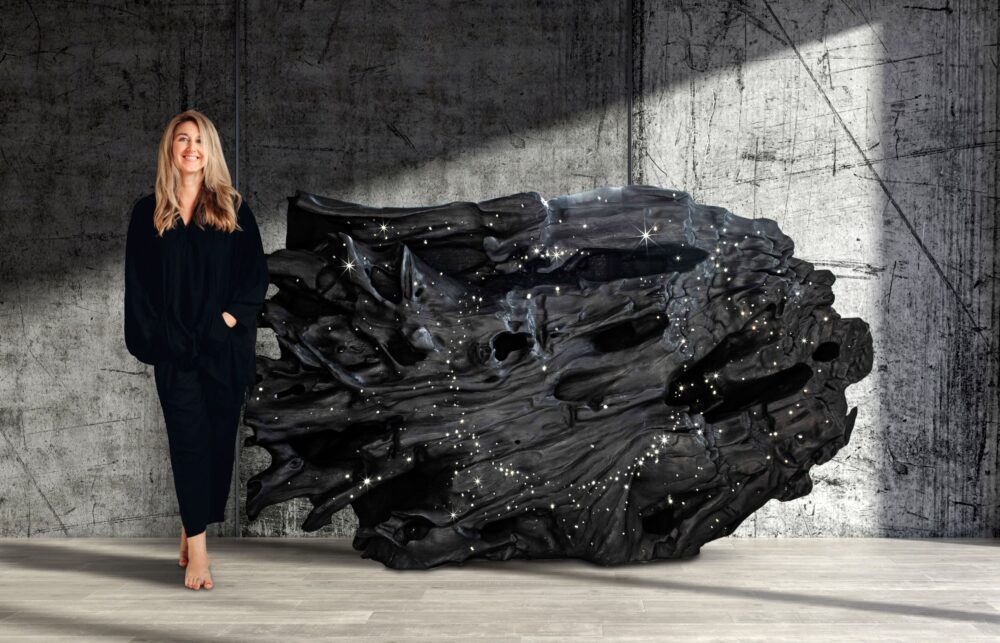
Integrating Blockchain into Art
Sunny Jackson’s use of blockchain represents a pioneering effort to merge physical art with digital verification. Each of her sculptures includes an NFT linked to a blockchain record that details the crystal’s mine origin, extraction date, and path to the final collector. This meticulous documentation not only enhances the value of her work but also aligns with a growing demand for transparency in high-end art.
“I use Provenance Proof to register each batch of crystals I work with, beginning from the Himalayan region of northern Pakistan where they are hand-extracted by artisanal miners using traditional methods,” Sunny Jackson explained to ArchiExpo e-Magazine in an email correspondance.
“The blockchain records key information including the mining region/location, the story behind the people who mined them, and the journey from source to studio. Each finished artwork is accompanied by an NFT that links directly to this blockchain record, allowing collectors to view the crystal’s sourcing history in full. It also functions as a permanent certificate of authenticity rooted in ethical sourcing. It’s not just paperwork – it’s digital storytelling.”
While blockchain technology is often associated with finance or digital assets, Jackson’s approach reveals its potential within the art world. By guaranteeing the authenticity and ethical origins of each piece, she challenges traditional notions of luxury, suggesting that beauty must be aligned with integrity.
Ethical Sourcing and Sustainability
Jackson’s commitment to ethical sourcing extends beyond technological integration. Working with artisanal miners from northern Pakistan’s Himalayan region, she ensures that the crystals used in her sculptures are obtained responsibly. These miners, who work at high altitudes with minimal machinery, follow sustainable practices that naturally reduce environmental impact. By partnering exclusively with miners tied to recognized local associations, Jackson also guarantees that her work supports the communities involved.
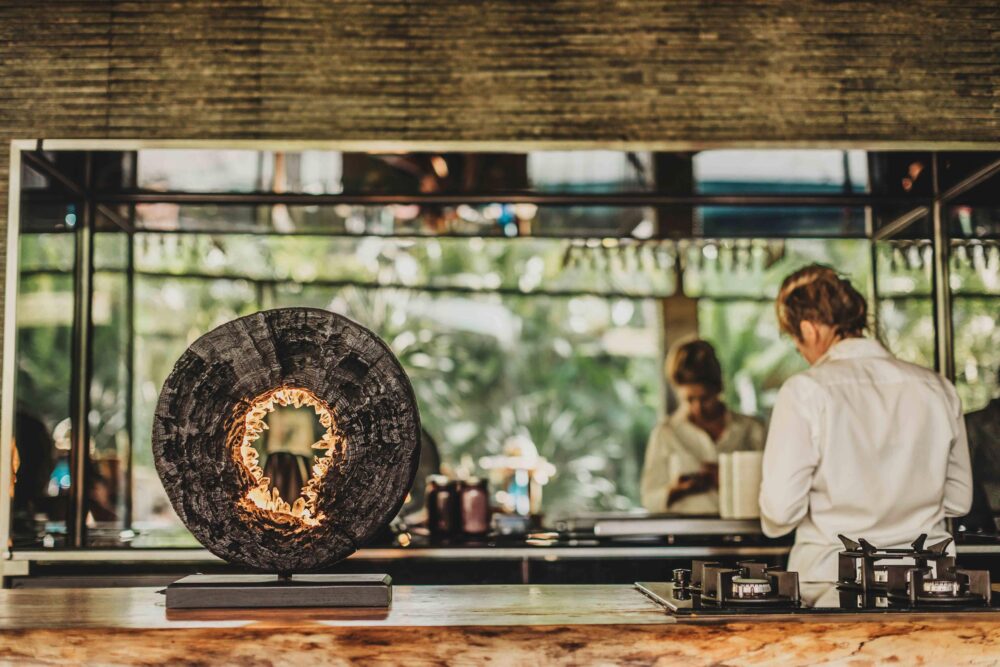
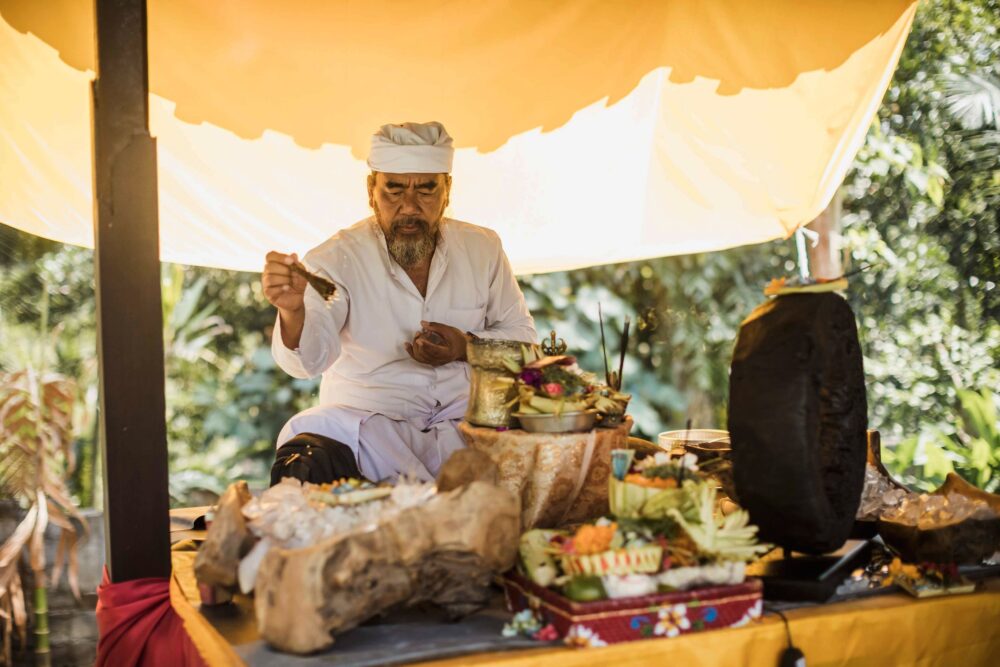
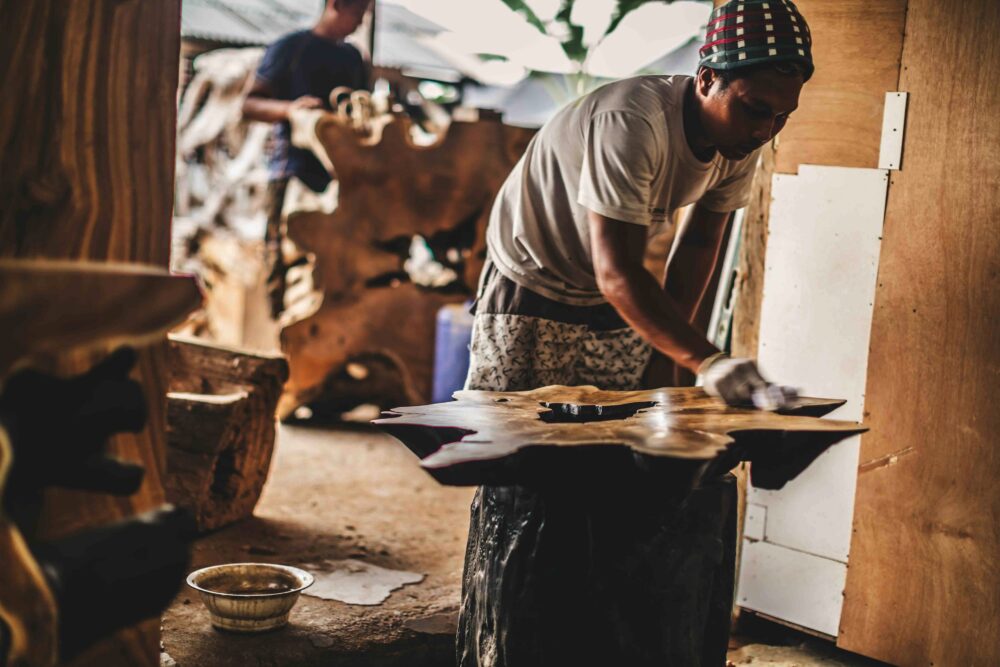
“One of the main challenges has been verifying the origins and conditions under which the stones are mined. I choose to work only with artisanal miners connected to local associations that support their communities, and as a result, I often pay three to four times more than what similar crystals would cost from conventional suppliers. But for me, it’s worth it.”
“Whilst large regulatory auditing committees have very good intentions, they can sometimes marginalize the small artisanal miners who don’t have the political clout or finances to meet strict regulatory compliance; hence making it nearly impossible for them to legally carry out generations of tradition based on an honorary system of miner’s associations’ democratic distribution framework.”
“Blockchain offers a promising start and serves as a powerful tool for tracing a gemstone’s journey, but it doesn’t replace the need for hands-on auditing at the source. In the end, I believe it’s up to each of us to act as our own best auditors.”
This conscious approach to sourcing not only contributes to the sustainability of the materials but also aligns with Jackson’s philosophy that art should resonate with both nature and human responsibility.
The Artist and Her Work
Jackson’s journey to becoming a trailblazer in art and technology began with her love for organic design, rooted in her upbringing on a bison farm in Iowa and summers spent exploring Yellowstone’s wilderness. After discovering quartz crystals, she was inspired to create light sculptures that embody the harmony between natural elements.
Her signature works, which combine hollowed logs and quartz crystals illuminated from within, are designed to reflect the yin-yang balance of nature. Each piece is a one-of-a-kind creation, reflecting not only the uniqueness of the natural materials but also the spirit of craftsmanship and innovation. Jackson’s sculptures can be found in private residences, luxury resorts, and wellness spaces worldwide, serving as both artistic statements and meditative focal points.
As the art world embraces sustainable and transparent practices, Sunny Jackson’s fusion of blockchain technology with handcrafted art emerges as a vital narrative of modern luxury, where ethics and aesthetics coexist seamlessly.
“I think blockchain has the power to transform how we define value in luxury art. It shifts the focus from secrecy and exclusivity to transparency, accountability, and storytelling. For artists working with natural or culturally significant materials, it offers a new kind of provenance that honors both the Earth and the people involved in the creation process. Collectors today want to know where things come from and how they’re made. Blockchain helps meet that need, not just as a tool for verification, but as a way of deepening trust, meaning, and long-term value. It’s a step toward a more conscious kind of luxury.”
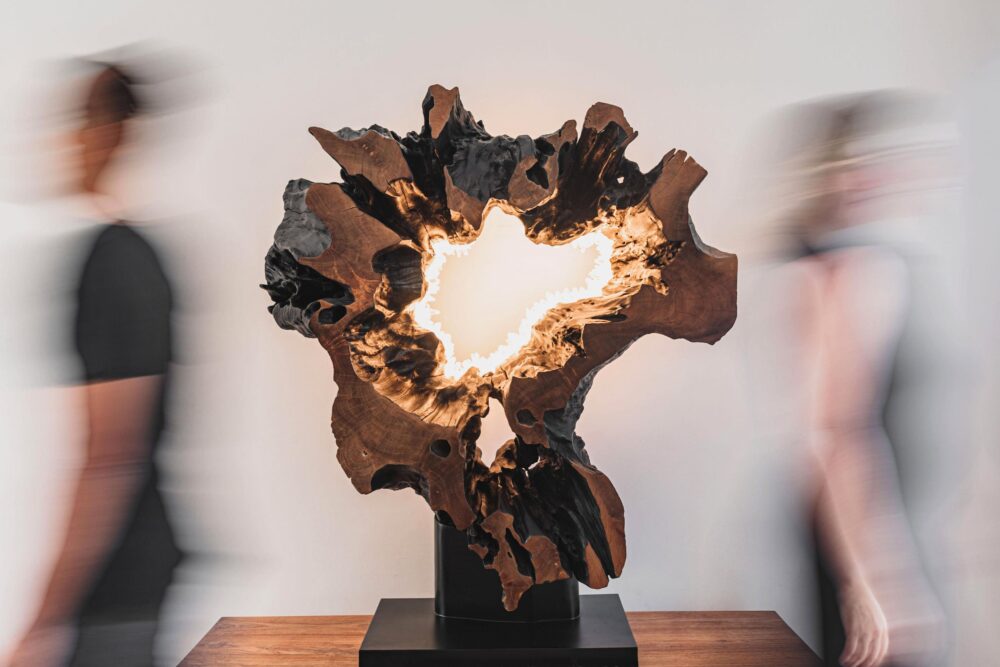
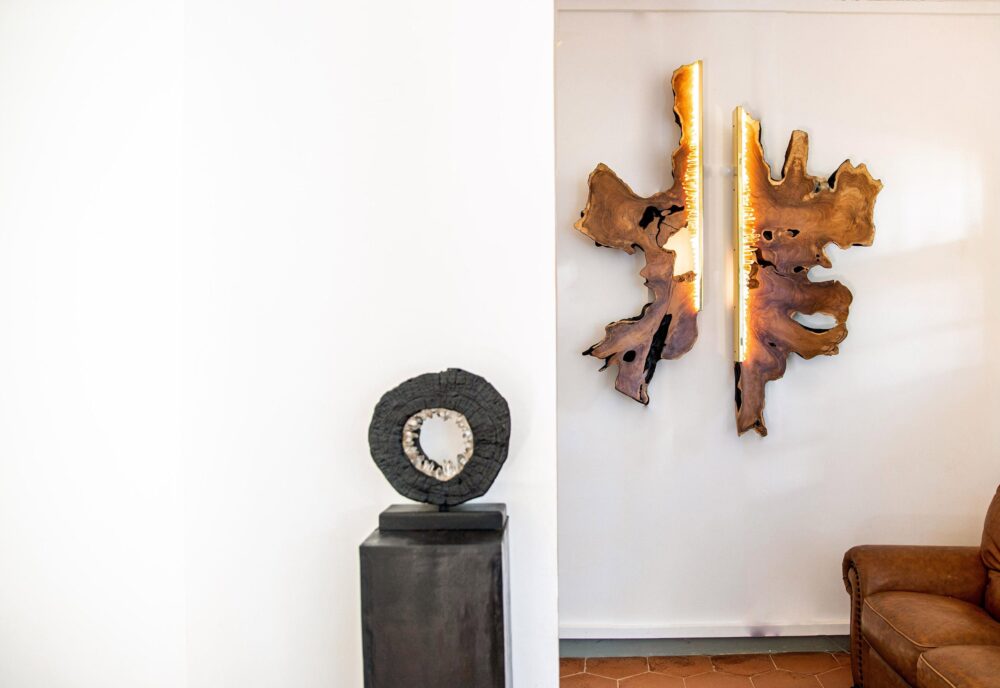
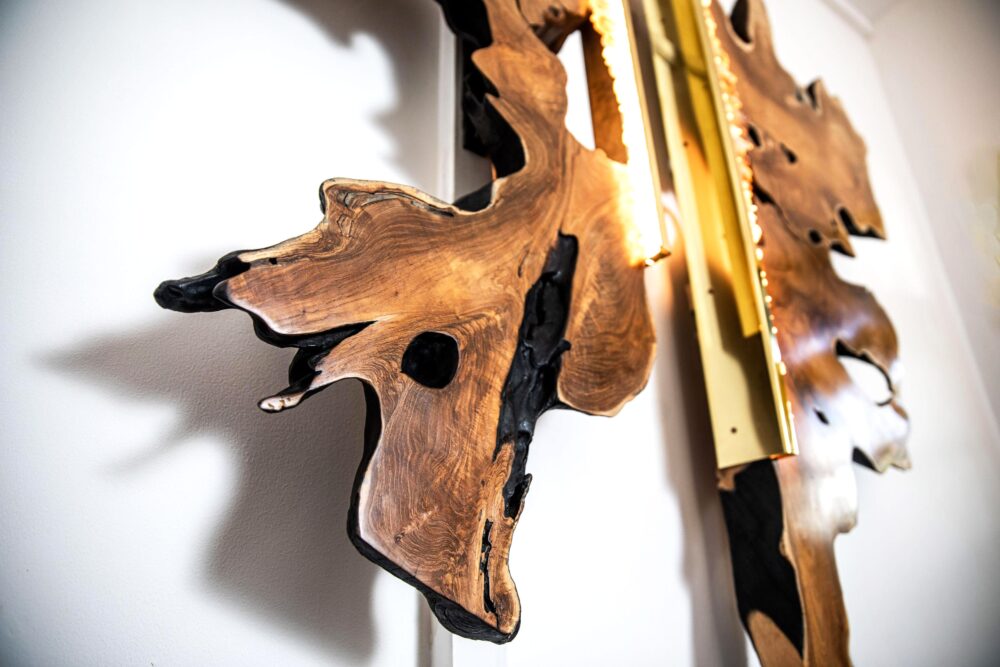
Inspired? Catch the Full Story of the Artist’s Journey Below
“Growing up, I was instilled with strong values of integrity, shaped largely by my dad, Bob Jackson. He was a backcountry ranger in Yellowstone National Park for over 30 years and a whistleblower. In the early 2000s, he made national headlines after calling out the Park Service for colluding with outfitters to illegally lure animals across park boundaries for big game hunting. He won his case but was ultimately fired. That moment left a lasting impression on me.”
“I saw those same values lived out again on our family’s bison ranch in Iowa, where we raise animals in free-roaming family groups on 700 acres of native prairie grass, just as nature intended. We follow a strict field slaughter practice to avoid unnecessary stress on the animal, even though this makes us unable to qualify for organic certification. The agencies in charge require animals to be transported to USDA-approved facilities, causing a lot of undue stress and less than ideal slaughter practices. So for us, we choose to honor the life of the animal more than the label, and more than the profits. That’s what integrity means to us – doing what’s right, not just what’s approved.”
“These values were ingrained in me from an early age. So when I began working with quartz crystals in my sculptural lighting practice, I naturally cared about their origins. In the beginning, I sourced crystals from Arkansas, where my uncle, a passionate rockhound, would collect them directly from local miners. These stones had passed through only a few hands before reaching mine. That created a connection I couldn’t quite put into words, but deeply felt. At the time, I had no idea those crystals would one day shape the core of my artistic path.
“When my family and I moved across the world to Bali, I began searching for a more regionally appropriate supplier. That search opened my eyes to the realities of the crystal trade; many of which were far from ethical. I uncovered serious environmental damage from large-scale open-pit mines. In some regions, I found reports of children as young as 7 and women carrying babies on their backs working these sites for less than $2 a day. The crystals would then pass through multiple middlemen before landing in the hands of global consumers. It didn’t sit right with me. I knew I had to find another way.”
“My research eventually led me to the Himalayan region, known for its pristine quartz and true artisanal small-scale mining practices. The land itself felt otherworldly, like something out of a myth.”
“When I learned how the crystals were mined, I was even more captivated. Artisanal miners spend several months in high-altitude camps, packing mules with gear and hiking remote mountains with hand tools and generational traditions. The crystals are carefully extracted by hand and carried back down the mountain in sacks. This is a cultural tradition of passed down local knowledge that sustains entire families and communities. Once I understood the full story, I knew I didn’t just want to source from this region – I wanted to help amplify it.
“About a year after I began sourcing from the Himalayas, I discovered Provenance Proof, a blockchain initiative created to bring traceability to the gemstone industry. I immediately reached out to see if I could register my crystals through their platform – and to my delight, the answer was yes. That marked the beginning of something meaningful: a fusion between my art and the transparent, traceable lineage of the crystals I work with. Blockchain technology has enabled me to maintain the deeply ingrained values I hold around integrity.”
“My art is more than sculpture to me. It’s a living relationship between people, crystals, place, and purpose.”
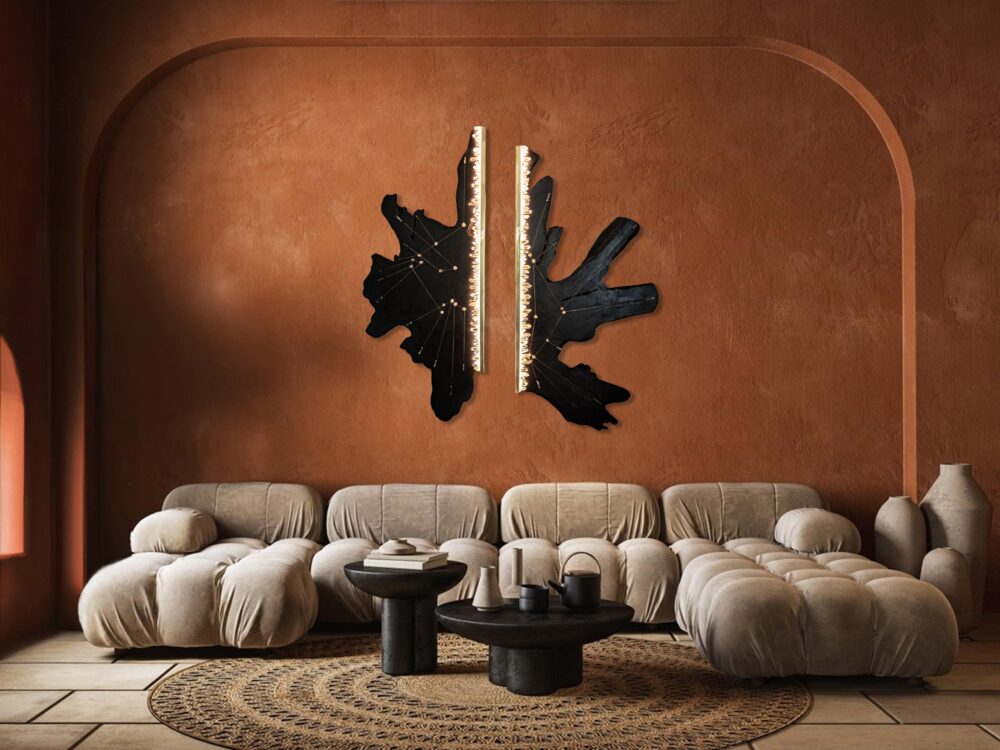
Blockchain Applications Beyond NFTs: Expanding Use Cases in the Art Market
While NFTs are the most recognized blockchain application in art, blockchain technology offers far broader potential. Artists and collectors can now record transactions involving restoration histories, exhibit loans, and even fractional ownership of physical art on blockchain ledgers. This enables collectors to store digital assets on the blockchain, ensuring data permanence and transparency while creating new digital markets for the art industry.
As the demand for transparency in luxury art rises, blockchain networks can be used to record, store, and access data on the blockchain, including detailed provenance, insurance documentation, and loan agreements. Artists working with blockchain applications can also build blockchain-based marketplaces for selling limited-edition digital artworks or licensing image rights securely, eliminating intermediaries and enhancing value for collectors.
Using blockchain solutions for managing these processes does not replace the human touch in curation or storytelling, but it improves how data is stored and accessed, reducing disputes over authenticity and ownership. For collectors, this means assets and transactions are recorded securely, enabling a seamless exchange process within the art market.
How Blockchain Security and Smart Contracts Enhance Trust and Transparency
Blockchain security is one of the key benefits of blockchain in the luxury art market, ensuring each transaction is recorded immutably across a distributed ledger technology system. Unlike traditional databases, blockchains combine cryptographic security with decentralized control, making it nearly impossible to alter provenance data without detection.
Additionally, smart contracts on platforms like the Ethereum blockchain can automate agreements between collectors, galleries, and artists. These contracts execute automatically when predefined conditions are met, reducing the need for costly legal intermediaries and ensuring trust and transparency. For example, a smart contract can release payment to an artist only after the collector confirms receipt of the artwork, or automatically distribute royalties if the piece is resold, enabling artists to participate in the secondary art market with ease.
The integration of blockchain security and smart contracts aligns with the evolving definition of luxury: accountability, traceability, and integrity in transactions. For collectors and artists, this shift toward blockchain solutions means engaging with a system that can improve processes, control access, and ensure transparency while preserving the story and value behind each artwork.
From Ethereum to Distributed Ledgers: Exploring Blockchain Solutions for Artists and Collectors
The adoption of blockchain in the art world extends from Ethereum’s public blockchain to private blockchain networks and enterprise-level distributed ledger technology used by organizations like IBM. Artists and collectors can choose between public blockchains for open verification and private blockchains when sensitive information requires restricted access, balancing transparency with confidentiality.
On the Ethereum blockchain, artists can build and deploy decentralized applications (dApps) for art sales, licensing, and exhibitions. These applications can use smart contracts to automate royalties, manage exhibition bookings, and facilitate secure digital transactions, supporting a more direct connection between creators and collectors.
While Bitcoin and the bitcoin blockchain are often cited for their role in establishing decentralized trust, it was pioneers like Satoshi Nakamoto and Stuart Haber who laid the groundwork for blockchain’s evolution into sectors like art. Their contributions have enabled today’s artists to use blockchain technology not just for NFTs but for building trust, securing digital assets, and recording transactions across a transparent system.
As governments and organizations explore blockchain solutions for authentication and digital asset management, the art industry stands at the forefront of adopting these technologies to enhance trust and security. Artists can now design projects and build blockchain-based services that align with the values of accountability and ethical practices, redefining what it means to own and collect art in a new digital age.


